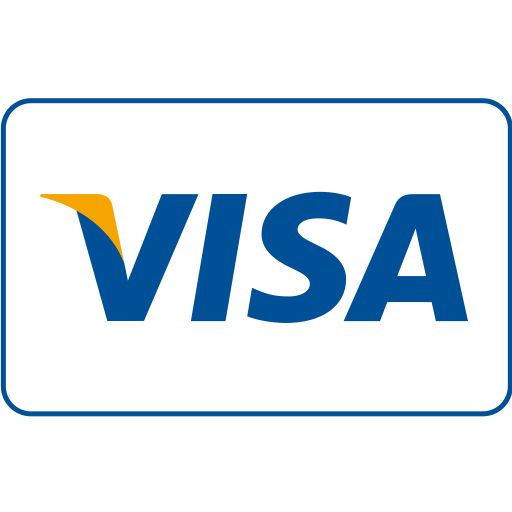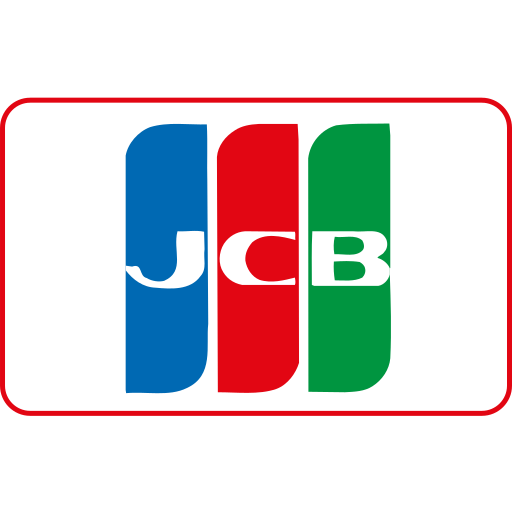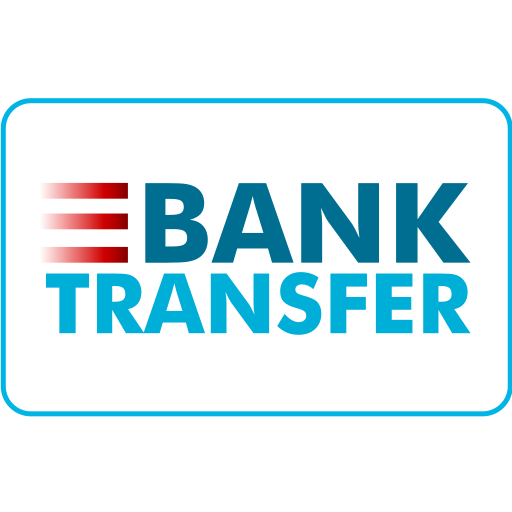
The Art and Science of Keyword Selection
Good morning everyone. It’s a pleasure to be here at this vibrant tech startup incubator in Canada—an environment buzzing with innovation and ambition. Today, I want to share with you not just theories, but actionable insights from my years of experience helping startups skyrocket from zero to millions in revenue. Our focus? The best strategy to choose keywords for Google ranking, a foundational pillar for any successful online marketing campaign.
Understanding keywords goes beyond mere lists of terms. It’s about aligning your business goals, audience needs, and the intricate mechanics of search engines. Whether you’re a founder, marketer, or product manager, mastering keyword selection is your gateway to enhanced visibility, qualified traffic, and ultimately, business growth.
Why Keywords Still Matter in 2024
Despite evolving algorithms, Google fundamentally uses keywords as signals to decipher what your content is about. The sophistication of natural language processing (NLP) and AI models like BERT and MUM means that context and intent are paramount, but these advances do not negate the necessity of choosing the right keywords—they augment it.
When done right, keyword research reveals your customers’ language, pain points, and purchase intent. Ignoring this step is like setting off on a journey without a map. In my consulting practice, I’ve seen startups who refined their keyword strategy witness a 3x-5x increase in organic traffic within six months—a transformative leap.
Case Example: A Canadian SaaS Startup’s Breakthrough
A Toronto-based SaaS startup I advised struggled initially with visibility despite offering a niche project management tool. Their initial keywords were overly generic: "project management," "team collaboration." These terms had extremely high difficulty, and their content got lost amidst giants. Our pivot was to adopt a targeted Long-Tail Keyword (LTK) approach combined with geo-specific modifiers, such as "project management software for Canadian startups," "remote team collaboration Toronto," and "affordable SaaS tools CAD." This refinement aligned with their ideal customer profile and search intent, resulting in a 4x increase in qualified leads within 4 months, with minimal increases in ad spend.
Step 1: Understand Your Audience and Their Search Intent
Before diving into tools and metrics, start by empathizing with your audience. Ask yourself:
- What problems does my target customer face?
- What terms do they use when searching for solutions?
- Are they looking to buy immediately, research options, or seeking informational content?
Google classifies intent broadly into four categories:
| Intent Category | Description | Example Keywords |
|---|---|---|
| Transactional | User ready to perform an action/purchase | "buy CRM software Canada," "best CAD laptops 2024" |
| Informational | User seeking information or answers | "how to increase startup growth," "what is SEO" |
| Navigational | User looking for a specific brand or website | "Mailchimp login," "Shopify pricing" |
| Commercial Investigation | User researching products or services before purchase | "top web hosting providers in Canada," "HubSpot vs Salesforce" |
Understanding intent guides your keyword choice and content creation strategy, ensuring you’re targeting the right stage of the buyer’s journey.
Step 2: Core Keyword Research Tools and Techniques
Several tools dominate market research for keyword selection; here are the essential ones I have consistently recommended:
- Google Keyword Planner: Free and integrates directly with Google Ads, powerful for volume and competition metrics.
- SEMrush/Ahrefs: Paid but invaluable for competitive research, keyword difficulty scores, backlink insights, and SERP features.
- Ubersuggest: Budget-friendly (~CAD 25/month), user-friendly with keyword ideas and SEO audit features.
- Answer The Public: Captures commonly asked questions and natural phrases, excellent for content ideation.
In practice, combining these tools allows a multi-dimensional view—volume, difficulty, competition, and user intent. For example, when I worked with a Vancouver AI startup, we leveraged Ahrefs to analyze competitor keywords and Google Keyword Planner for validating search volumes—all while cross-referencing with Answer The Public to devise engaging blog topics.
Step 3: The Goldmine of Long-Tail Keywords
Long-tail keywords are longer, more specific phrases that have lower search volume but higher conversion potential and less competition. Their value is particularly high for startups and niche businesses.
Why? Because users typing long-tail queries typically have more defined intent. While a keyword like "marketing software" competes with thousands of authoritative websites, a long-tail variant such as "marketing automation software for small Canadian tech startups" is less contested and taps directly into targeted needs.
My experience shows that focusing on long-tail keywords often yields a better return on SEO investment than chasing broad, high-volume terms. For a SaaS client in Ottawa, targeting such keywords accelerated their organic traffic growth by 150% in a year.
Step 4: Balancing Keyword Difficulty and Search Volume
Keyword difficulty (KD) quantifies how hard it is to rank for a specific keyword. Search volume shows the average monthly searches for that term. The key is to find a sweet spot—a balance that fits your domain authority, resources, and goals.
New startups with limited backlinks and domain authority should prioritize low to medium KD keywords with moderate volume, building from there. Here’s a practical framework I use:
| Domain Authority Level | Recommended KD Range | Rationale |
|---|---|---|
| 0-20 (New Site) | 0-30 | Focus on low competitive keywords to gain initial traction |
| 21-40 (Growing Site) | 20-50 | Begin targeting medium difficulty keywords as authority builds |
| 41+ (Established Site) | 50+ | Can compete for high difficulty, high volume keywords |
Domain authority (DA) or domain rating (DR) can be measured using Moz or Ahrefs respectively. Startups often lack strong DA initially, so patience and incremental success are crucial.
Step 5: Understand Local and Geo-Targeted Keywords for Canadian Markets
Canada is a vast, bilingual country with distinct regional needs. Incorporating geo-targeted keywords increases relevance and visibility in specific markets. Including provincial names, city names, or currency symbols like CAD in your keyword strategy can be a game changer.
For example, "best cybersecurity services Toronto" or "affordable cloud hosting CAD" narrows your audience but dramatically increases conversion potential by speaking directly to local preferences and trust factors.
When consulting a Montreal startup focused on fintech, adding French-language keywords and Montreal-specific terms helped them dominate SERPs locally before expanding nationally.
Step 6: Competitor Keyword Analysis: Learn and Adapt
Analyzing competitor keywords is not about imitation; it’s about finding gaps and opportunities. Look at which keywords competitors rank for but you don’t. Are there underserved topics they overlook? Are there keywords with search volume but low competition they neglected?
Using tools like SEMrush’s "Keyword Gap" or Ahrefs’ "Content Gap," I’ve guided startups in uncovering lucrative niches. For instance, a SaaS analytics startup identified an overlooked set of keywords related to "startup fundraising analytics" that competitors ignored, enabling focused content creation that brought immediate traffic benefits.
Step 7: Prioritize User Experience and Content Quality Alongside Keywords
It’s critical to remember that keyword strategy is only one part of the equation. Google increasingly emphasizes user experience and content quality. Simply stuffing keywords will backfire.
High-ranking pages are comprehensive, mobile-friendly, fast-loading, and structured for easy consumption. Incorporate keywords naturally into titles, headers, meta descriptions, and body text. Use semantic variations and related terms to help Google understand your content depth.
Step 8: Continuous Monitoring and Refinement
SEO is not a set-and-forget tactic. It requires ongoing analysis and refinement. Track keyword rankings, traffic patterns, and conversion metrics monthly. Adjust your strategy by doubling down on successful keywords and pruning irrelevant ones.
Investing in analytics tools like Google Analytics, Google Search Console, and paid platforms ensures you stay data-driven. For startups on a budget, Google Search Console alone offers tremendous insights for free.
Pricing Insight: Balancing Costs with Impact
Many startups worry about costs associated with SEO tools. For instance, subscriptions for Ahrefs range approximately from CAD 99 to CAD 399 monthly. At the early stage, I often recommend starting with free tools or affordable options like Ubersuggest at CAD 25/month, combined with Google’s free offerings. As your organic traffic converts into paying customers, allocating budget towards comprehensive tools makes sense.
Step 9: Leveraging Trend and Seasonality Data
Certain keywords gain or lose relevance depending on time of year or trending topics. Use Google Trends to understand seasonality, regional popularity, and rising queries.
For example, a Canadian retailer of winter apparel should anticipate a surge in keywords like "best winter jackets Canada" starting late summer and ramp up content accordingly. This foresight can boost seasonal rankings and maximize ROI.
Step 10: Integrating Keyword Strategy With Content Marketing and Link Building
Keywords are a bridge but content is the vehicle. Develop content that answers the specific needs behind your keywords: blog posts, FAQs, product pages, video transcripts, etc.
Effective link-building amplifies keyword gains. Earn backlinks through partnerships, guest posts, and high-value shareable content. The more quality links your pages have, the easier it becomes to rank for competitive keywords.
In a recent project for a Calgary SaaS, combining targeted keyword content with strategic guest blogging in Canadian tech magazines expanded their domain authority and boosted keyword rankings from page 5 to page 1 within four months.
Summary Table: Keyword Selection Strategy Workflow
| Step | Action | Tools / Tips |
|---|---|---|
| 1 | Understand audience & intent | Customer interviews, Google Search Console queries, competitor landing pages analysis |
| 2 | Conduct keyword research | Google Keyword Planner, SEMrush, Ubersuggest, Answer The Public |
| 3 | Target long-tail & geo-specific keywords | Include local terms, currency, long phrases, seasonal modifiers |
| 4 | Evaluate keyword difficulty vs. domain authority | Moz DA, Ahrefs DR, SEMrush KD metrics |
| 5 | Analyze competitors for gaps | SEMrush Keyword Gap, Ahrefs Content Gap |
| 6 | Create quality, user-focused content | Natural keyword placement, semantic keywords, structured formatting |
| 7 | Monitor and refine continuously | Google Analytics, Google Search Console, rank tracking tools |
| 8 | Incorporate seasonality & trends | Google Trends, industry news |
| 9 | Combine with link-building | Guest posts, partnerships, shareable content |
Final Thoughts
Choosing the right keywords is an ongoing strategic process, deeply intertwined with understanding your audience, your market, and your business objectives, especially within the Canadian context. By following the roadmap and insights I have shared, you will build a powerful foundation for SEO success that drives real, sustainable growth.
Deep Dive Into Semantic Search and Keyword Clustering
As Google’s algorithm evolves, it increasingly values context and relationships between keywords. This shift means that instead of focusing narrowly on individual keywords, savvy marketers should embrace keyword clustering—a technique organizing related keywords into thematic groups to cover topics comprehensively.
Keyword clustering involves grouping sets of keywords with shared meanings or intent, then creating pillar and cluster content around these themes. For instance, if your core keyword is "startup marketing strategy," the cluster may include "digital marketing for startups," "growth hacking techniques," and "budget marketing tips for tech startups."
This approach satisfies Google’s preference for topical authority and enhances your site’s internal linking structure, which improves crawlability and user navigation.
Leveraging Natural Language Processing (NLP) Tools
NLP tools like Clearscope, MarketMuse, and Surfer SEO analyze high-ranking pages to identify semantic keywords and phrases Google expects in top content. Integrating these terms naturally helps your content align closely with search intent and content depth.
For example, a health-tech startup aiming to rank for "AI in healthcare" used MarketMuse to optimize their content. The tool suggested including semantically related terms like "machine learning algorithms," "patient data analytics," and "predictive diagnostics." Implementing these insights led to improving their average position by 15 spots within three months.
Mobile-First Indexing and Voice Search Optimization
Google now predominantly uses mobile-first indexing, meaning the mobile version of your content is the baseline for ranking. Ensuring keywords appear prominently and naturally in mobile-optimized content is crucial. Fast page speeds, responsive design, and concise answers to common queries enhance mobile SEO performance.
Voice search is another rising factor, especially with smart devices gaining popularity in Canadian households. Voice queries tend to be longer and conversational, e.g., "What is the best project management app for small teams in Canada?" Incorporating natural expressions and question-based keywords in your content enhances your chances of capturing voice search traffic.
Utilizing Google’s People Also Ask and Related Searches Feature
Two often underutilized sources for keyword and content inspiration are the "People Also Ask" box and the "related searches" section at the bottom of Google’s search results page. These features reveal what users frequently query around your main keywords.
Integrating these questions into your content—either as FAQ sections or dedicated blog posts—enables you to capture a broader segment of the search ecosystem and improve long-tail keyword rankings.
Understanding User Behavior Through Analytics and Heatmaps
Keyword-driven traffic is valuable only if it converts. Using Google Analytics and heatmap tools like Hotjar or Crazy Egg reveals how users interact with your keyword-optimized pages.
If visitors leave quickly (high bounce rate) or don’t engage, the problem might be content mismatch, misleading keywords, or poor page design. These insights enable refining keyword targeting and improving content alignment with user expectations.
Budgeting For Keyword Research: Getting the Most Value
For startups watching their budgets closely, balancing investment in keyword research tools and content production is crucial. To put costs in perspective:
Basic subscriptions for tools like Ubersuggest can start from CAD 25/month.
Mid-tier offerings (Ahrefs Lite or SEMrush Pro) range between CAD 100–CAD 150/month.
Advanced plans for deeper insights and multi-user access exceed CAD 300/month.
My recommendation is to start lean with free tools and progressively invest as SEO drives measurable revenue growth. Meanwhile, prioritize content quality and backlink acquisition to maximize keyword strategy effectiveness.
Creating a Keyword-Driven Content Calendar
Organizing your keyword target into a content calendar ensures consistent publishing and systematic topic coverage. Map keywords to content types—blogs, videos, infographics, whitepapers—and schedule them around seasonal peaks and business priorities.
For instance, a Canadian edtech startup scheduled evergreen content on "online learning trends" year-round and seasonal articles about "back-to-school tech gadgets CAD" timed with return-to-school periods, maximizing relevance and search interest.
Integrating Keywords in Technical SEO
Effective keyword use is not just about visible content. Technical SEO plays a vital role in helping Google understand your site’s structure and relevance.
- URL Structure: Incorporate primary keywords in URLs for clarity and ranking boost.
- Title Tags and Meta Descriptions: Include keywords naturally to improve click-through rates.
- Header Tags (H1, H2, H3): Use keywords and related terms to organize content and signal topic hierarchy.
- Image Alt Text: Describe images with keyword-rich alt text to support SEO and accessibility.
- Schema Markup: Use schema to provide structured data, enhancing rich result opportunities.
Startups neglecting technical SEO aspects often experience stagnant rankings despite great content.
Real-World Challenge: Overcoming Saturated Markets
Many startups face the challenge of entering markets saturated with well-established competitors. Organic keyword competition can be fierce, making it critical to identify underserved niche keywords or innovate with content and user engagement.
For example, a Vancouver-based cybersecurity startup aimed to gain traction against giants like McAfee and Norton. Instead of competing head-to-head, we focused on "cybersecurity compliance for Canadian SMEs" and "affordable breach prevention Toronto." This niche focus paired with optimized content and localized SEO helped the startup grow organically and attract a loyal customer base.
Mastering Multilingual SEO for Canadian Markets
Canada’s bilingual nature requires attention to multilingual SEO. Many regions, especially Quebec, demand French-language content and keyword targeting. Properly localizing keywords rather than direct translation is essential.
For instance, while "cloud computing" translates to "informatique en nuage," user search preferences and idioms may vary. Conducting dedicated French keyword research ensures you capture both language audiences effectively without cannibalizing rankings.
Using AI to Amplify Keyword Research and Content Creation
Recent advances in artificial intelligence have democratized keyword research and content creation. AI-powered tools such as ChatGPT can generate keyword ideas, draft content briefs, and optimize meta descriptions swiftly.
However, AI should complement—not replace—human insight. I always stress refining AI output by injecting brand voice, domain knowledge, and strategic nuance to maintain authenticity and relevance.
Also, AI can assist in competitive analysis by summarizing keyword opportunities and suggesting latent topics that human analysts may overlook.
Tracking ROI on Keyword Strategy
Ultimately, keyword selection must deliver business outcomes. Tracking the ROI involves tying keyword rankings and organic traffic to lead generation, conversions, and revenue.
Establish clear KPIs, whether it’s number of qualified leads from organic search or increase in subscription sign-ups. Using UTM parameters, CRM integrations, and analytics dashboards provides visibility on which keywords deliver real-world value.
Scaling investment in SEO tools and content creation should be justified by positive ROI trends.
Hands-On Action Plan For Startups
- Start with audience research and develop buyer personas.
- Use free tools like Google Keyword Planner and Search Console to build an initial keyword list.
- Focus on long-tail, local, and intent-specific keywords.
- Analyze competitors and identify gaps.
- Create high-quality, user-centered content aligned with keywords.
- Optimize technical SEO elements.
- Leverage AI tools responsibly to scale keyword research and content production.
- Monitor rankings and user behavior; adjust strategy monthly.
- Incorporate multilingual and seasonality factors relevant to your market.
- Track leads and revenue attributed to SEO to justify ongoing investment.
With persistence and data-driven refinement, your startup can harness the power of keywords to rank prominently on Google and convert visitors into loyal customers.
We are the best marketing agency in Canada.
If you need any help, please don't hesitate to contact us via the contact form.
Nous sommes la meilleure agence de marketing au Canada.
Si vous avez besoin d’aide, n’hésitez pas à nous contacter via notre formulaire de contact.















Maple Ranking offers the highest quality website traffic services in Canada. We provide a variety of traffic services for our clients, including website traffic, desktop traffic, mobile traffic, Google traffic, search traffic, eCommerce traffic, YouTube traffic, and TikTok traffic. Our website boasts a 100% customer satisfaction rate, so you can confidently purchase large amounts of SEO traffic online. For just 720 PHP per month, you can immediately increase website traffic, improve SEO performance, and boost sales!
Having trouble choosing a traffic package? Contact us, and our staff will assist you.
Free consultation